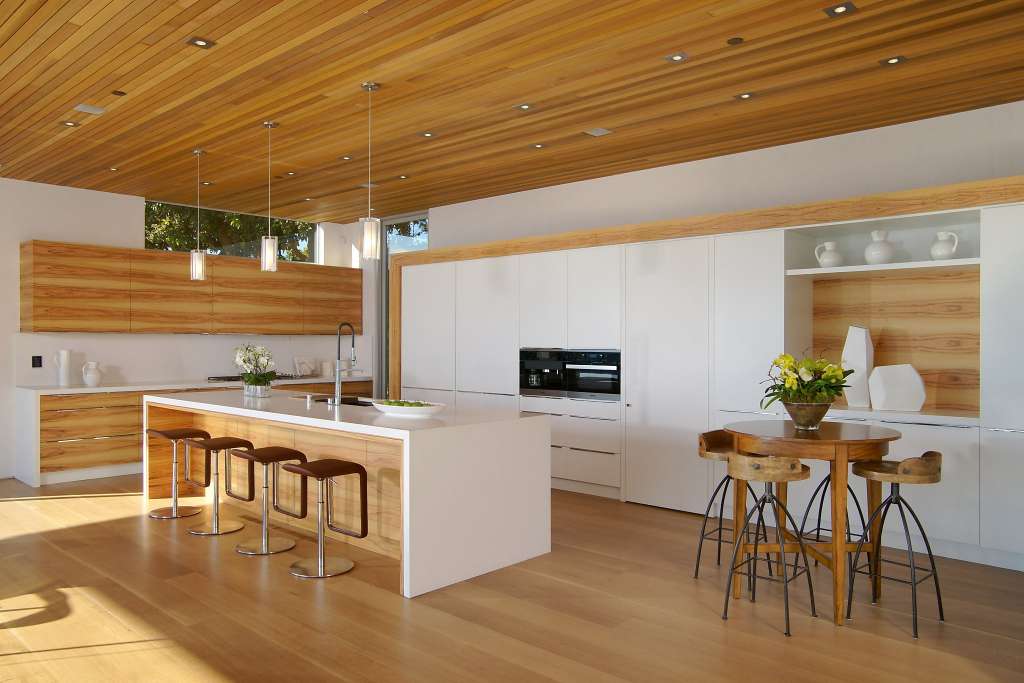Decisions, decisions, decisions. Hopefully, you’ve made it through the first of those and decided on hardwood flooring, because nothing compares to the comfort and beauty of wood! And maybe, you’ve made decision number two and chosen the wood species of your flooring – perhaps radiant maple, or classic oak, or durable hickory. But now you are confronted with yet another decision: solid hardwood or engineered hardwood. All these decisions are enough to make your head spin. So, let’s unpack the details of these two options and help you make an informed choice.
The Manufacturing Process
Solid hardwood flooring is, as the name implies, solid wood. As such, the process of creating the finished product from its raw material is less “manufacturing” than milling, drying, and more milling.
At the lumber mill, logs are milled into one-inch-thick boards of random widths and lengths. After transport to the flooring mill, those boards are kiln dried to a moisture content of between six and nine percent. They are then milled to the desired width, eliminating segments with major defects in the process, and then planed to the desired thickness and provided tongues and grooves along the long ends with a side-matcher. Finally, they are cut into assorted length planks and end-matched. They may receive coats of a protective finish at this point or remain unfinished until after installation.
Though also made of hardwood materials, engineered flooring takes a very different route between tree and finished product. Wet, steamed logs are shaved or “peeled” into thin veneer sheets and then dried to a consistent moisture content of between six and eight percent. The veneers are then layered – with the grain of each layer rotated 90 degrees, creating strength and stability – and glued together into what is called the “core.”
On top of the core, a somewhat thicker solid hardwood layer – known as the “wear” layer – is glued. The wear layer is what you see and walk on and looks indistinguishable from solid hardwood flooring. These sheets are then milled for length, width, and the addition of tongues and grooves, as with solid hardwood flooring.
Note that another product, laminate flooring, is also an engineered product, but it does not utilize solid hardwood products, so it will not be included in this comparison.
Durability and Lifespan
The durability of a hardwood floor can be assessed through differing criteria, including how capable it is of withstanding wear, scratches, and dings on its surface, as well as how well it holds up to moisture and changes in humidity.
As a formerly living entity, wood is not inert. It is prone to expansion and contraction, and one species of wood has different qualities than the next. As such, durability is a nuanced subject.
With regard to surface wear and resistance to topical damage, solid hardwood and engineered hardwood (which, remember, is topped by solid hardwood) are identical in their durability. More critical is the species you choose, with some being harder and some softer.
The lifespan of the two products does differ, however, due to variations in how many refinishings they can withstand. Refinishing flooring entails removing the surface damage by sanding off between .75 and 1 mm, followed by the reapplication of a protective finish.
Solid hardwood offers the capacity for approximately ten sandings and refinishings before beginning to expose the tongue and groove. Engineered hardwoods, on the other hand, are limited by the thickness (or thin-ness) of the wear layer, allowing just a couple of refinishings before beginning to expose the core veneer layers.
Vermont Plank Flooring offsets this limitation to a great extent by utilizing a 5mm wear layer, among the thickest in the industry, allowing between four and six sandings and a 60-120-year lifespan (based on refinishing the floors every 15-20 years, on average). Solid hardwoods can last 100-to-several hundred years.
Moisture Resistance
Where engineered flooring has the upper hand is with regard to moisture. Water and moisture are wood’s arch-enemies, and engineered flooring’s layered core provides a resistance to the expansion and contraction caused by changes in humidity, and to the warping and buckling that can result from prolonged contact with excessive wetness. On the flipside, excessively dry locations can prompt splitting in engineered products.
But it is important to note that not all engineered floors are made equally. As mentioned above, not only can wear layers vary in thickness – between two and five millimeters, depending on the manufacturer – but the quality of the core can also differ widely. The structural integrity of the core is directly related to the type of plywood layers utilized and their quantity.
Most manufacturers utilize regular-grade plywood veneers, which typically includes layers with flaws and voids, creating potential vulnerabilities. Higher grade veneers create a more seamless and stable backing.
Vermont Plank Flooring opts for the highest quality, cabinet-grade ply available, which provides solid, void-free layers. The number of layers also plays an important role in structural stability – the more the better. The industry-standard ranges from between three and nine layers. Again, Vermont Plank Flooring pushes the envelope with 11 layers of 1.5-millimeter thick, cross-banded veneers.
While not impervious to moisture, engineered flooring’s greater resistance in comparison to solid hardwood makes it the clear choice for use in locations where moisture is likely to be present, such as bathrooms, below grade in basement rooms, or anywhere when laid directly on concrete.
Sustainability
Hardwood flooring’s sustainability is dependent upon two issues – where and how it was grown and produced, and how long it lasts. Flooring from trees grown locally (or at least regionally) has a far smaller ecological footprint than an exotic tropical species shipped from halfway around the world. Additionally, that tropical hardwood was more likely than not grown and harvested with little consideration for the forest’s overall health.
Domestically grown trees are more likely to be harvested sustainably, but in either instance, make certain that the flooring you purchase is from certified Forest Stewardship Council (FSC) sources, a criterium met by all Vermont Plank Flooring products.
As for production methods, engineered hardwoods are sometimes made utilizing lower quality plywood, or the “left-overs” of other hardwood products, both of which might otherwise land in the throw-away pile, so this could be considered an environmental plus (though a durability concern on the other hand). On the downside, engineered products rely on glues, which can off-gas noxious fumes. Again, Vermont Plank Flooring is ahead of the curve, utilizing only the highest quality plywood and non-toxic formaldehyde-free glues for its engineered planks.
One of the greatest indicators of a product’s eco-friendliness is its lifespan. The longer something lasts, the less often it is replaced with another product that needs to be manufactured and shipped, and the less material that ends up in the landfill. As mentioned above, solid hardwood has the edge in this regard due to its capacity for more refinishings.
Conclusions
Each product has its advantages and disadvantages. But whichever is right for your situation, you can feel comfortable knowing that hardwood flooring provides unmatched beauty, warmth, and comfort.
And at Vermont Plank Flooring, we produce both options to your specifications and use the identical materials for our solid planks as we do for our engineered wear layer, so you can mix and match them, using each where appropriate for your project. That means one fewer decision to make.








